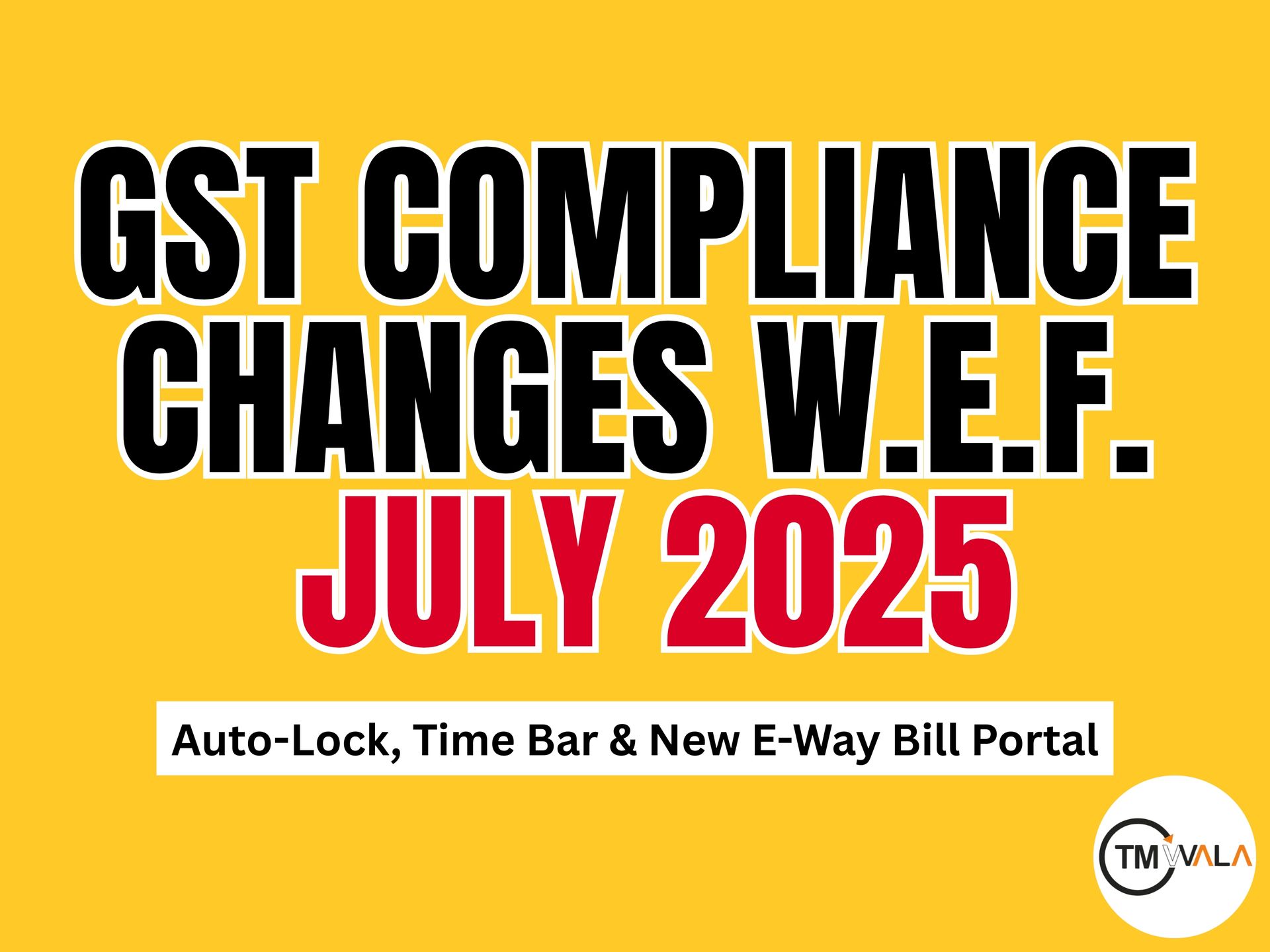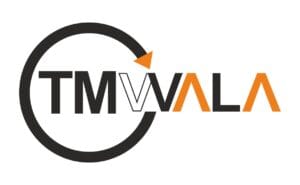
INTRODUCTION
The GST return filing rule changes from July 2025 bring significant shifts in compliance requirements for businesses across India. Major updates include the GSTR-3B Auto-lock, strict 3-year GST return filing limit, late GST return penalty 2025and classification of time-barred GST returns. The introduction of e-way bill 2.0 ensures smoother logistics, while broader GST return filing changes 2025 mandate real-time accuracy. Taxpayers must utilize the GSTR-1A correction for July 2025 effectively and act on the guidance for how to file pending GST returns 2025.
Non-compliance may lead to input tax credit blocked returns, and with the expected e-invoicing new threshold of 2025, even more businesses must digitize their processes. This guide about GST compliance will let you know all the information about the new rule change for GST return filing. Through automatic invoice matching, compliance monitoring, and timely warnings that make sure companies don’t miss deadlines or get out of compliance with GST requirements, TMWala can help businesses adjust to these changes.
GST RETURN FILING RULE CHANGES FROM JULY 2025
As of July 2025, a new rule for GST compliance has been introduced. These updates were made to improve GST compliance, such as GST return filing, revenue, time limit regarding this all and other GST-related compliances. Among the most impactful changes are the GSTR-3B, auto-lock, a strict 3-year return filing limit, and the launch of E-Way Bill 2.0. For more details, kindly refer to:
Advisory regarding non-editable of auto-populated liability in GSTR-3B- Goods & Services Tax (GST) | News and Updates
A major update, “GST Return Filing Rule Changes from July 2025”(to be filed in August 2025) is the GSTR-3B, auto-lock of Table 3, which contains outward supply details.
What’s Changing?
Exceptions:
With this modification, there will be no more differences between summary returns and outgoing supply returns, and fewer audit flags will be raised when there are inconsistencies.
A 3-year GST return filing limit has been set. Now, the GST portal will not allow return filing beyond 3 years from the due date, starting August 1, 2025. This applies to all types of GST returns, regardless of whether tax was payable or not.
Covered Returns:
The GST portal will automatically reject filing if returns are submitted after the three-year deadline. After these changes, the return filing became time-barred.
Now, the taxpayers must file all pending GST returns due before August 1, 2022, by July 31, 2025, to avoid becoming permanently time-barred. For more details, kindly refer to:
Consequences of not filing a return on time:
To remain in compliance, nil refunds must be submitted before the deadline, even if you made no sales or transactions.
Businesses could use platforms like TMWala, which manage pending returns and automatically alert users of deadlines, to mitigate these risks.
To reduce downtime and ensure seamless movement of goods, the E-Way Bill 2.0has been introduced. The official site is mentioned herewith:
Key Features:
This guarantees seamless logistics operations and continuous e-way bill creation for products valued at over ₹50,000, whether for supply, inward purchase, or branch-to-branch transfers.
The taxpayers must reconsider their return filing tactics in light of the GST return filing changes for 2025.
The key additions are:
To adjust to these new changes, the businesses need to train their personnel, start using real-time invoice matching tools, and update their compliance platforms on a regular basis.
By integrating your accounting data, finding discrepancies, helping with GSTR-1A repairs, and guaranteeing the timely submission of previous returns, all from a single platform, TMWala streamlines this procedure.
GSTR-1A CORRECTION JULY 2025
GSTR-1A becomes crucial when GSTR-3B, auto-locked. Before filing GSTR-3B, this return permits changes to previously filed GSTR-1 or IFF data.
How It Works:
To prevent inaccurate GSTR-3B filings, buyers must track rejected invoices in real time and take prompt corrective action.
LATE GST RETURN PENALTY 2025
The system will permanently ban return filing if you fail the three-year deadline. Penalties could consist of:
To avoid this, make sure all backdated filings are done by July 31, 2025.
Take prompt action if you have any past-due returns, particularly those from Financial Year 2017–18 to Financial Year 2021–22.
INPUT TAX CREDIT BLOCKED RETURNS
If previous returns are not filed before the completion of the 3-year deadline, the taxpayers’ working capital and tax liability will be immediately impacted.Hence, the related Input Tax Credit would be denied.
This is especially concerning for businesses with:
Denial of ITC to your purchasers due to late or non-filing may also result in problems with your reputation and commercial relationships.
The E-Invoicing turnover level is anticipated to decrease even more in 2025, although this has not been determined yet. More enterprises will be required to use electronic invoicing, particularly small and medium-sized organizations.
If implemented:
Start preparing your systems to adopt e-invoicing if your turnover is near the anticipated threshold (likely ₹5 Cr or less).
With the rollout of the GST return filing rule changes from July 2025, businesses must act swiftly to align with the stricter compliance framework. The GSTR-3B auto lock, 3 year GST return filing limit, and time barred GST returns make timely and accurate filings more critical than ever. Embracing tools like E-way bill 2.0,late GST return penalty 2025 and leveraging GSTR-1A Correction July 2025, are essential to avoid disruptions. To safeguard working capital and ITC eligibility, follow the steps under how to file pending GST returns 2025 and prepare for the likely e-invoicing new threshold 2025. Proactive compliance today will help businesses avoid input tax credit blocked returns and maintain seamless operations in the evolving GST landscape.
Platforms like TMWala, which include intelligent compliance tools, GST checks, return filing automation, and reconciliation capabilities to guarantee complete alignment with the new GST standards, are crucial in assisting firms in adapting.
Get started instantly

TMWala
Your one stop shop for all your business registration and compliance needs.
Our Services
© Copyright TMWala. All rights reserved
Choose your Entity Type
Individual/ MSME/ Sole Proprietorships
Non-MSME/ Large Entities

₹1,500.00 Original price was: ₹1,500.00.₹999.00Current price is: ₹999.00.
Trademark Application @ ₹999* (Basic Discounted Plan for MSME/Individual/Sole Proprietorships) Best-Selling, Economical & Easy

₹1,500.00 Original price was: ₹1,500.00.₹999.00Current price is: ₹999.00.
Trademark Application @ ₹999* (Basic Discounted Plan for Non-MSMEs/Large Entities) Best-Selling, Economical, Quick and Easy
Choose your Entity Type
Individual/ MSME/ Sole Proprietorships
Non-MSME/ Large Entities
₹3,500.00 Original price was: ₹3,500.00.₹1,999.00Current price is: ₹1,999.00.
Government Fees
₹4500/-
₹3,500.00 Original price was: ₹3,500.00.₹1,999.00Current price is: ₹1,999.00.
Government Fees
₹9000/-
Choose your Entity Type
Non-MSME/ Large Entitie
Individual/ MSME/ Sole Proprietorships

₹9,000.00 Original price was: ₹9,000.00.₹3,999.00Current price is: ₹3,999.00.
Trademark Application @ ₹3999* (Premium Discounted Plan for Non-MSMEs/Large Entities) Comprehensive
Government Fees
₹9000/-

₹9,000.00 Original price was: ₹9,000.00.₹3,999.00Current price is: ₹3,999.00.
Trademark Application @ ₹3999* (Premium Discounted Plan for MSME/Individual/Sole Proprietorships) Comprehensive
Government Fees
₹4500/-